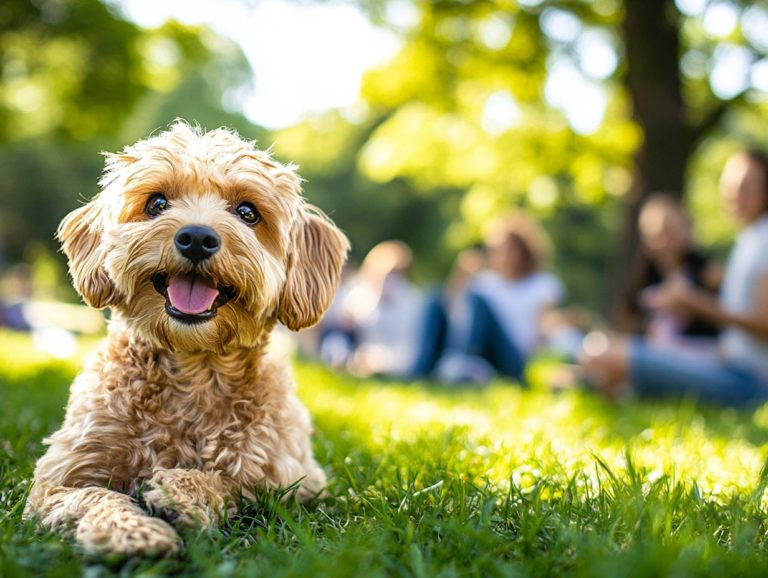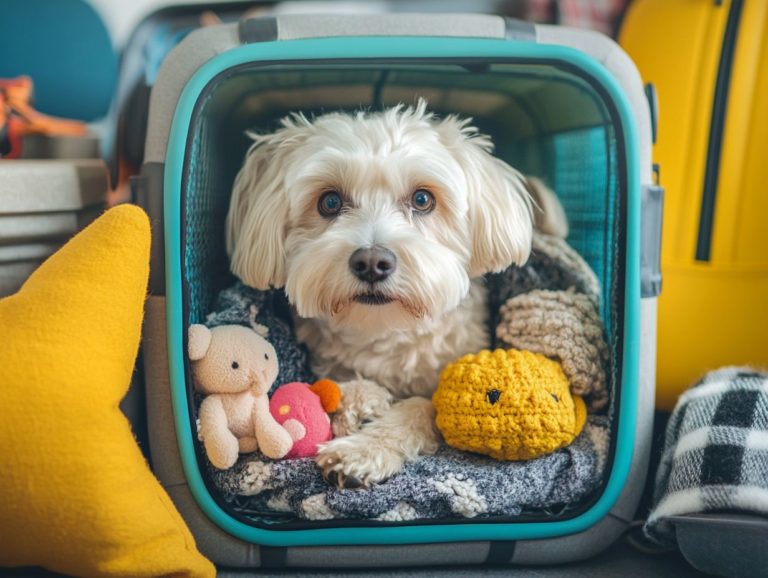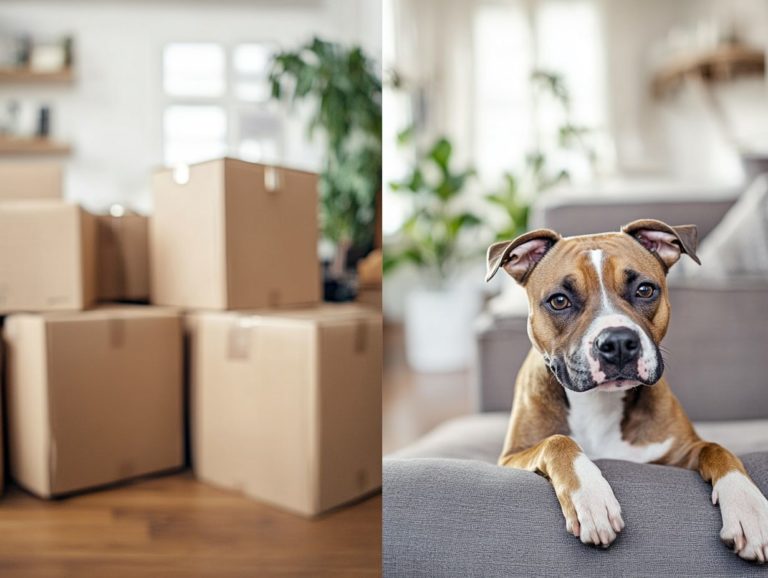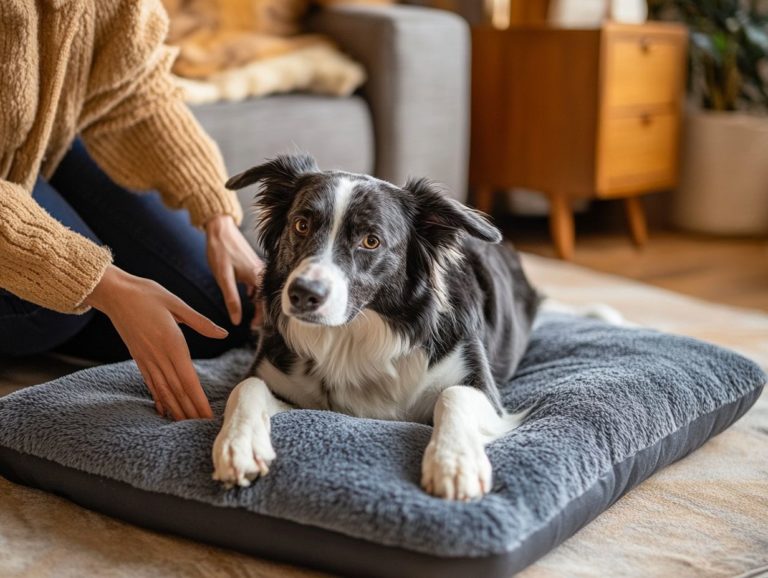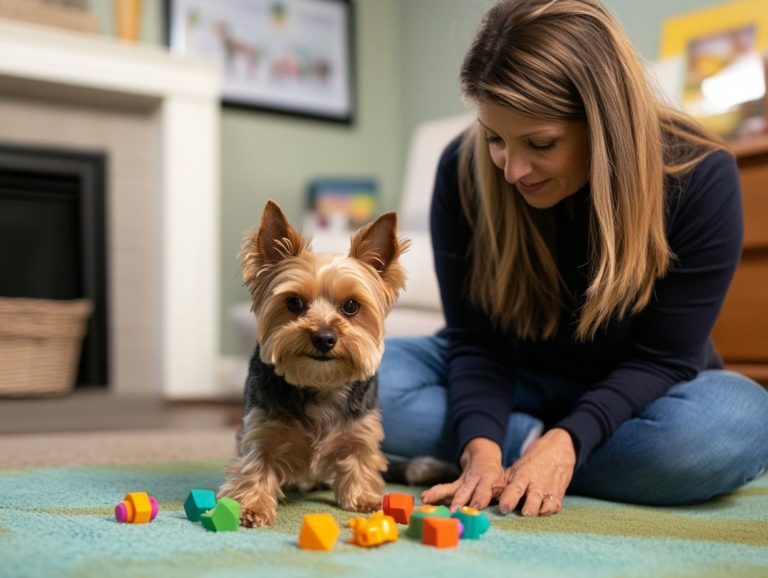Understanding Noise Phobias in Pets
Noise phobias can be very distressing for both you and your furry friends. Many pets experience an overwhelming fear of loud sounds, which can affect their quality of life in various ways.
Let s explore what noise phobias are, highlight common triggers that spark fear, and guide you on how to recognize the signs of anxiety in your beloved animals.
We will also look into what causes these phobias, offer effective treatment options, and outline preventive measures to help your pets feel more secure.
Discover how you can support your cherished companions through their noise fears, creating a happier and calmer home for everyone.
Contents
- Key Takeaways:
- What are Noise Phobias in Pets?
- Signs and Symptoms of Noise Phobias
- Causes of Noise Phobias
- Treating Noise Phobias in Pets
- Medication Options
- Preventing Noise Phobias in Pets
- Frequently Asked Questions
- Wondering what are noise phobias in pets, such as thunderstorm phobia and canine noise aversion?
- What are some common triggers for noise phobias in pets?
- How do I know if my pet has a noise phobia?
- Are certain breeds more prone to noise phobias?
- How can I help my pet cope with noise phobias?
- Can noise phobias in pets be cured?
Key Takeaways:
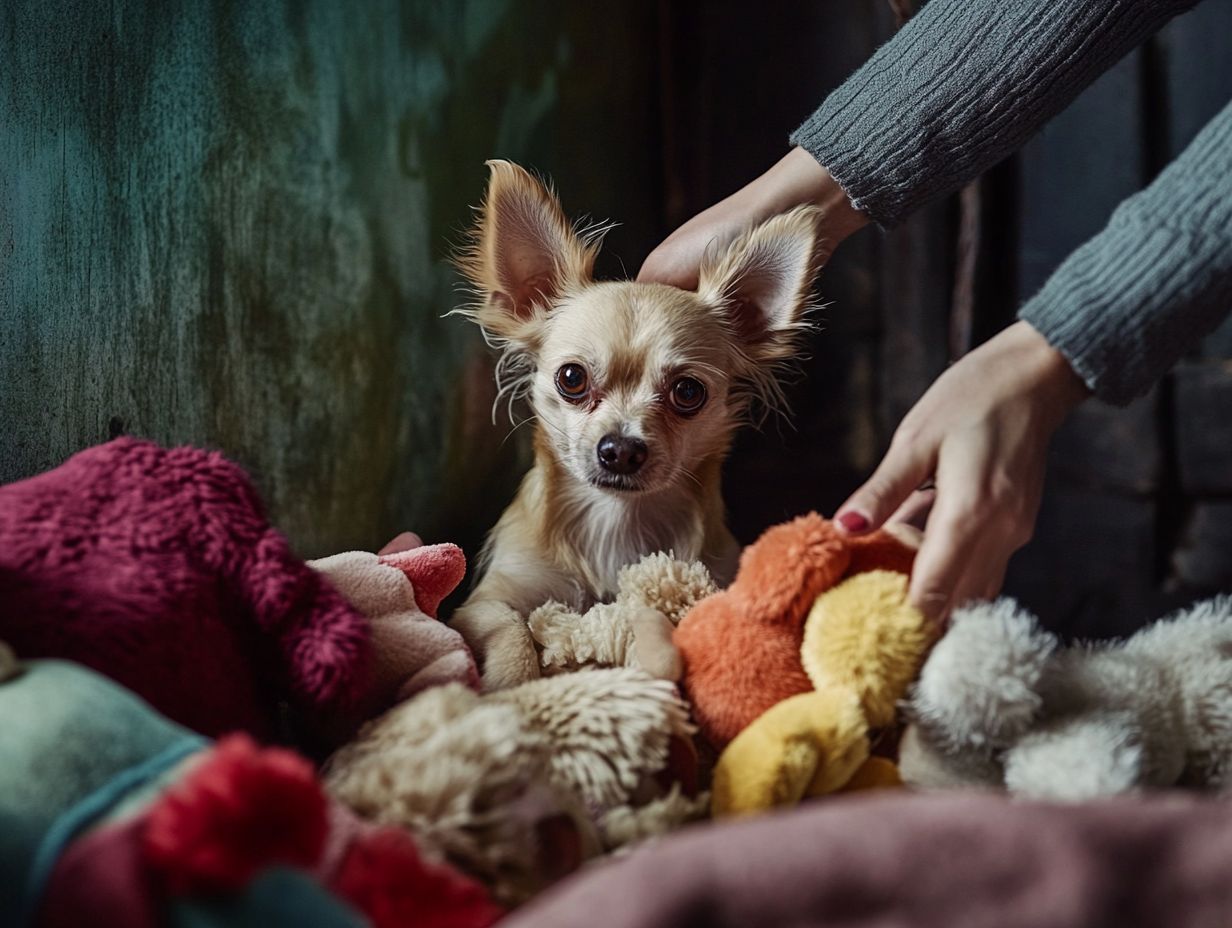
- Noise phobias in pets are excessive and persistent fears of specific sounds, such as thunderstorms or fireworks.
- Signs of noise phobias in pets include excessive panting, trembling, and attempts to escape or hide.
- Causes of noise phobias may include genetics, past traumatic experiences, or lack of exposure to different sounds during critical development periods.
What are Noise Phobias in Pets?
Noise phobias in pets, especially in dogs, present as a deeply ingrained and often crippling fear response to a range of loud sounds think thunderstorms, fireworks, vacuum cleaners, and even fire alarms. This isn t just a fleeting scare; it s a complex behavioral challenge that stems from the animal’s psychological and physiological makeup.
Factors like genetic predisposition and past traumatic experiences play a significant role in increasing sound sensitivity. This means some dogs are more prone to developing noise phobias than others. Grasping the intricacies of this issue is essential for you as a pet owner, as well as for veterinary professionals who aim to provide the best care.
Definition and Common Triggers
Noise phobia is a condition where pets, particularly dogs, display strong fear reactions to certain loud sounds, resulting in significant anxiety and distress.
You may notice this condition manifest in various ways, such as trembling, hiding, destructive behavior, or excessive vocalization. Common triggers include thunderstorms, with their booming claps of thunder; fireworks, which unleash sudden, loud explosions; and gunshots, echoing unpredictably. Sound sensitivity not only amplifies your dog’s anxiety but also creates challenges for you during seasonal events or celebrations.
Experts like Kristen Collins from the Cummings School of Veterinary Medicine emphasize the importance of recognizing these fears early. Recognizing these signs early is key to preventing severe issues for your pet, so understanding the sources of such phobias is essential. This awareness can guide you toward effective management strategies, ultimately fostering a calmer environment for your beloved pets.
Signs and Symptoms of Noise Phobias
Recognizing the signs and symptoms of noise phobias in pets is crucial for effective intervention. These behaviors can vary significantly, ranging from mild anxiety to debilitating panic attacks, often triggered by specific loud noises like thunderstorms or fireworks.
A fearful dog may display behaviors such as excessive barking, destructive chewing, and desperate attempts to escape their environment, highlighting the profound impact sound sensitivity can have on their emotional well-being.
By being attuned to these symptoms, you can take proactive measures to enhance your dog’s quality of life.
In conclusion, if you notice signs of noise phobia in your pet, it s essential to seek help and take immediate action to support their well-being.
Recognizing Fear and Anxiety in Pets
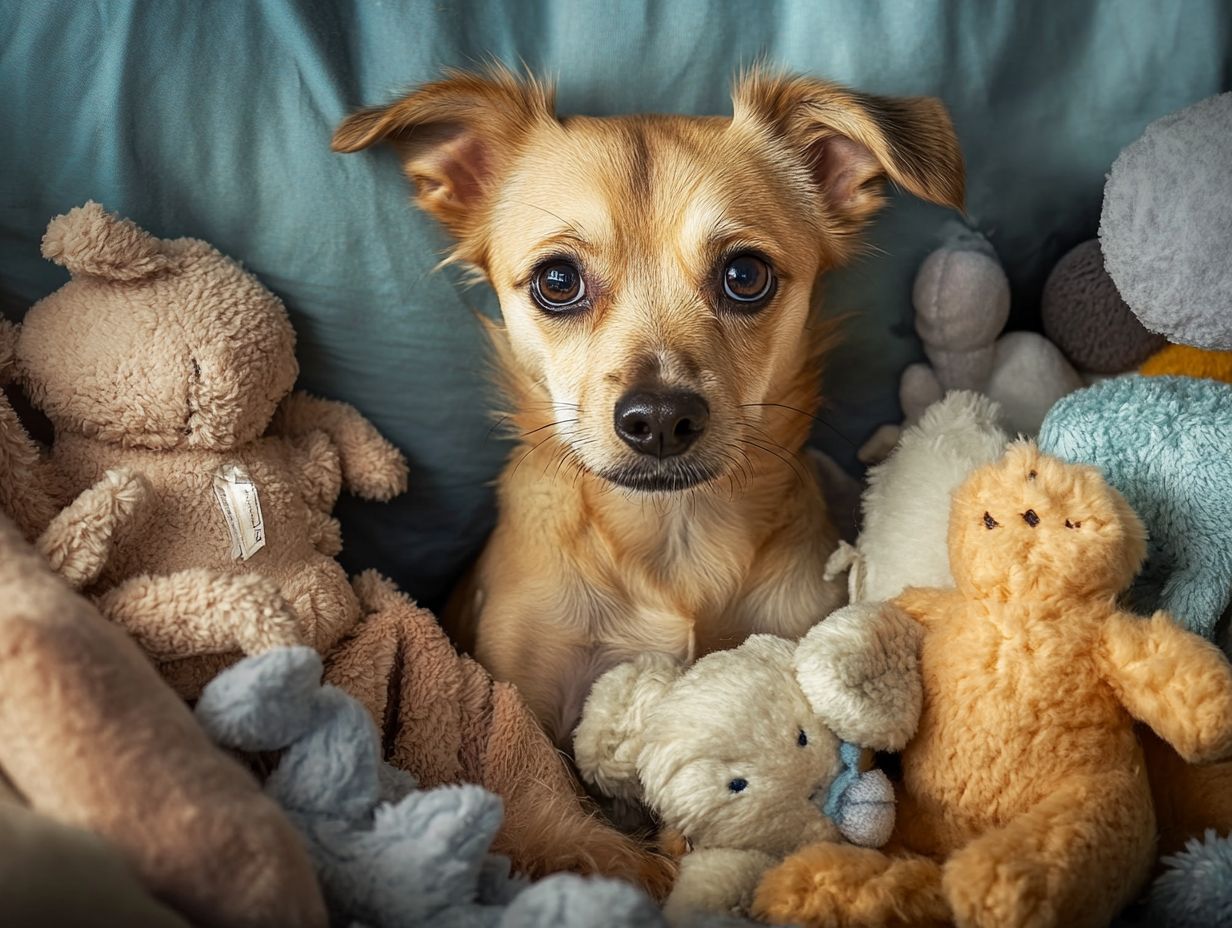
Recognizing fear and anxiety in pets requires careful observation.
Pay attention to their body language and behavioral patterns, especially during loud noises that may trigger phobias.
You might notice signs like trembling. This often appears as shaking or a quivering stance when your furry friend is startled by sudden sounds, such as thunderstorms or fireworks.
Vocalization may also increase, with whimpering or barking becoming more pronounced as anxiety takes hold.
Hiding behavior serves as another significant indicator. A frightened pet often seeks refuge in tight spaces, like beneath the bed or tucked away in a closet, to escape the overwhelming stimuli.
Research from institutions like Tufts University emphasizes that sound sensitivity is a common issue across various breeds. This can lead to distressing behaviors if not effectively addressed.
Causes of Noise Phobias
Understanding the root causes of noise phobias in pets requires a nuanced approach.
Consider genetic predisposition, environmental influences, and past traumatic experiences.
Research suggests that certain dog breeds may be more genetically inclined to develop noise phobias. Exposure to stressful situations during key growth phases can increase their sensitivity to sound.
By exploring these factors, you can gain deeper insights into how noise phobia manifests in individual pets and the different levels of severity in their fear responses.
Understanding the Root Causes
Exploring the root causes of noise phobias in pets reveals a complex interplay of genetics, environment, and individual experiences that shape their fear responses.
Research indicates that certain breeds may be genetically predisposed to heightened anxiety, making them more vulnerable to developing noise phobias.
Experts from the ASPCA highlight how early experiences matter, such as exposure to loud noises during formative developmental stages.
If your pet was raised in unpredictable or stressful surroundings, they may grapple with noise-related fears and exhibit generalized anxiety.
Understanding this dynamic is essential for you as a pet owner. It enables you to develop effective interventions and create safer, more comforting conditions for your furry companions.
Treating Noise Phobias in Pets
To help your pet overcome noise phobias, you need an effective plan!
Treating noise phobias requires a thorough strategy that includes behavioral modification techniques, sound therapy, and customized medication options designed for each dog’s unique needs.
Your aim is to gently desensitize fearful dogs to triggering sounds. Incorporate stress management strategies to enhance their overall quality of life.
Veterinary medicine is vital in this process. It helps assess the severity of the condition and prescribes suitable interventions to alleviate the anxiety that comes with loud noises, such as thunderstorms or fireworks.
Behavioral Modification Techniques
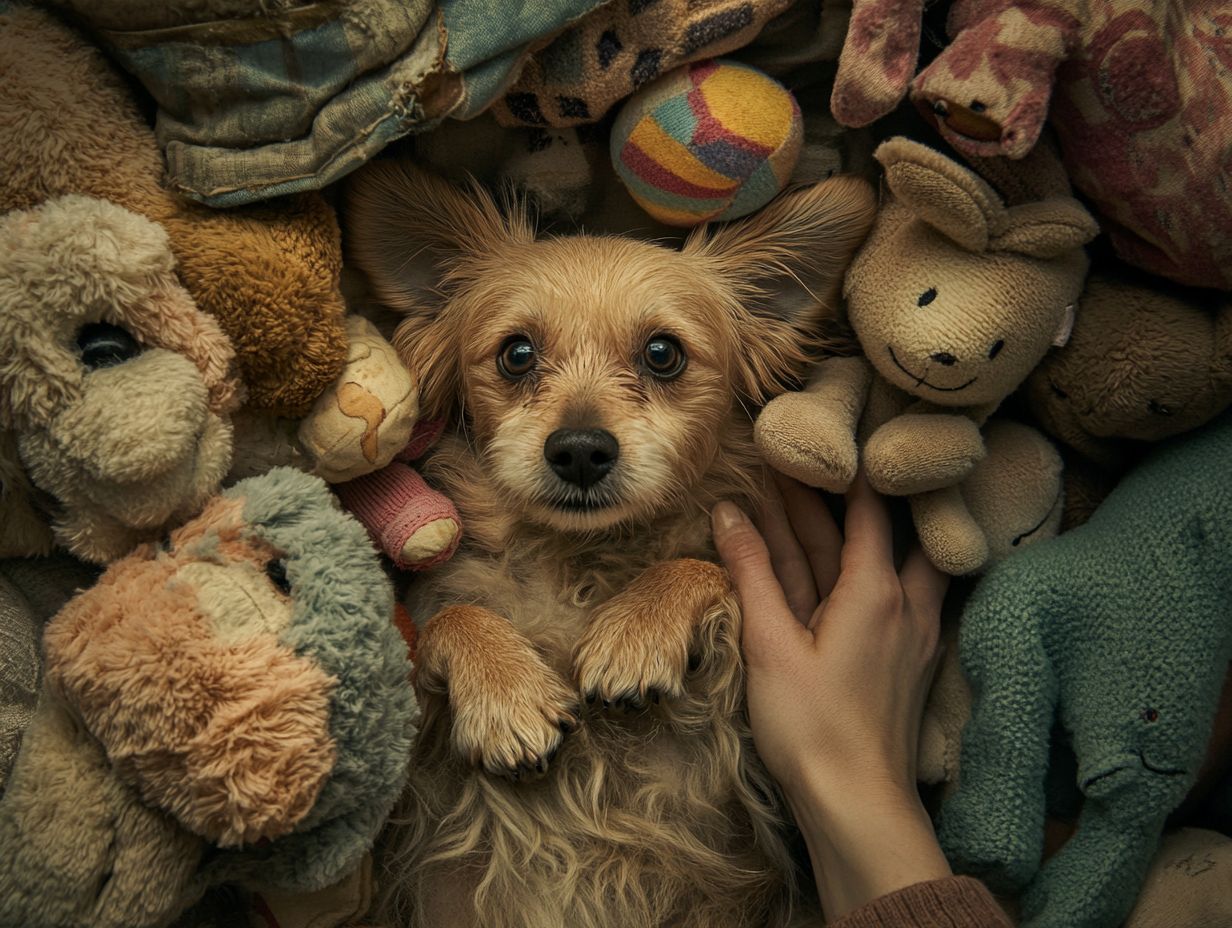
Behavioral modification techniques, such as positive reinforcement and systematic desensitization, are essential for addressing noise phobias in pets.
These approaches not only enhance your pet’s comfort level but also strengthen the bond you share. When you use positive reinforcement rewarding your pet with treats or praise for staying calm during loud noises you encourage a more relaxed response.
Systematic desensitization introduces sounds at a low volume, slowly increasing the intensity over time. This method allows your pet to acclimate without being overwhelmed by fear.
Additionally, incorporating calming music from various animal behavior clinics can create a soothing background that further alleviates anxiety, making a significant impact in managing noise-related stress.
Medication Options
When treating noise phobias in your pets, medication options like Sileo and Adaptil can be quite effective. These medications help alleviate anxiety during stressful moments triggered by loud noises.
Sileo is a gel formulation containing dexmedetomidine, a drug that helps calm pets during stressful situations, like loud noises. On the other hand, Adaptil releases pheromones that mimic those produced by nursing mothers, providing a comforting presence.
Your vet is key to finding the right treatment for your pet! They assess your pet’s individual needs and determine the appropriate dosage and timing for these treatments. Incorporating ways to help pets relax such as playing soothing music or utilizing anxiety wraps can enhance the effectiveness of these medications.
These strategies offer a more holistic approach to managing noise-related anxiety in your beloved pets. Act now! The right medication can help your pet feel safe during loud noises.
Preventing Noise Phobias in Pets
Preventing noise phobias in your pets is a proactive strategy. It emphasizes the importance of effective safety measures, training, and gradual exposure to triggering sounds to reduce fear and anxiety.
By cultivating a supportive environment and employing calming techniques, such as sound therapy and desensitization training, you can help your dog build resilience against loud noises. This significantly minimizes the risk of developing noise phobias.
Early intervention is crucial; it can profoundly influence your dog’s ability to cope in emergency situations where loud noises, such as thunderstorms and fireworks, may be prevalent.
Tips for Reducing Fear and Anxiety
Implementing effective strategies to reduce dog anxiety and fear response can significantly enhance your pet’s ability to cope with trigger sounds. This ultimately prevents the onset of noise phobias.
One key approach is systematic desensitization training. Gradually expose your furry companion to the feared sounds at a low volume while showering them with positive reinforcement, such as treats and praise. Sound therapy techniques, including bioacoustic music, can be immensely beneficial.
Establishing a safe space adorned with cozy blankets and familiar toys is equally essential for fearful dogs. By incorporating these strategies, such as stress management techniques and safety measures, you not only alleviate their fears but also nurture a more confident pet overall.
Watch this video for practical tips on helping pets handle noise anxiety:
Frequently Asked Questions
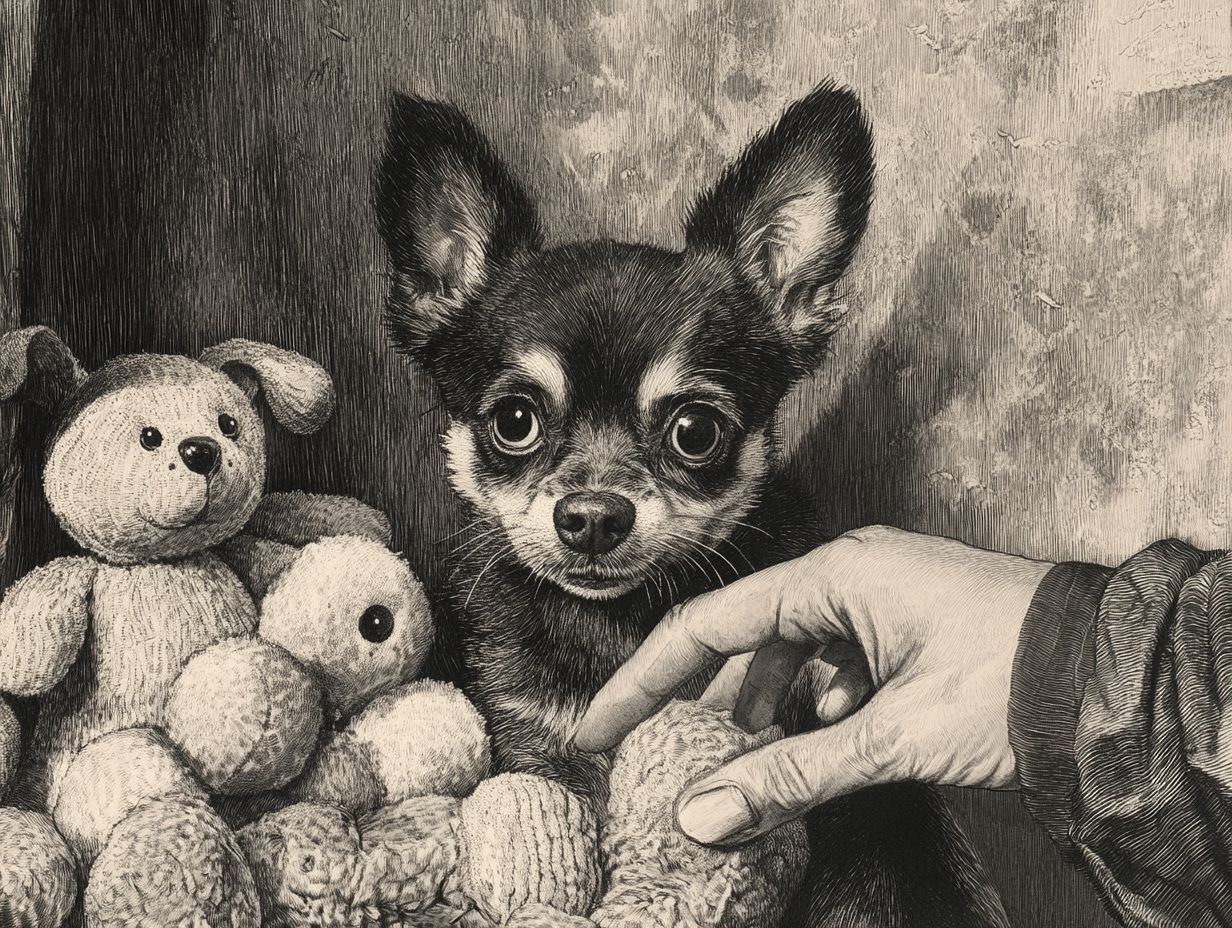
Wondering what are noise phobias in pets, such as thunderstorm phobia and canine noise aversion?
Noise phobias in pets are extreme and irrational fears of certain sounds or noises. These phobias can cause intense stress and anxiety in pets, but using white noise to soothe anxious pets can help alleviate a variety of behavioral and physical symptoms.
What are some common triggers for noise phobias in pets?
Common triggers for noise phobias in pets include thunderstorms, fireworks, gunshots, vacuum cleaners, and loud music. Some pets may also develop phobias to more specific sounds, such as car alarms or sirens.
How do I know if my pet has a noise phobia?
If your pet exhibits excessive fear, anxiety, or stress in response to certain noises, such as fire alarms or loud construction sounds, it is likely they have a noise phobia. Other signs include trembling, hiding, pacing, panting, and vocalizing. It is best to consult a veterinarian for a proper diagnosis.
Are certain breeds more prone to noise phobias?
Yes, certain breeds of dogs, such as Golden Retrievers, German Shepherds, and Border Collies, have a genetic predisposition and are more prone to developing noise phobias. However, any breed of pet can develop a phobia to certain noises.
How can I help my pet cope with noise phobias?
There are several ways to help your pet cope with noise phobias. These include desensitization training, creating a safe and comfortable space during triggers, and using calming supplements or medications like Adaptil or VetriScience Composure prescribed by a veterinarian.
Addressing noise phobia early is essential to enhance your pet’s well-being.
Can noise phobias in pets be cured?
Noise phobias in pets can be challenging, but they can be managed effectively. Understanding the anxiety spectrum in pets can help your pet learn to cope with their fears through training methods and support from a veterinary professional.
With dedication from you and your veterinarian, your pet can transform their anxiety into a calmer, happier life.

